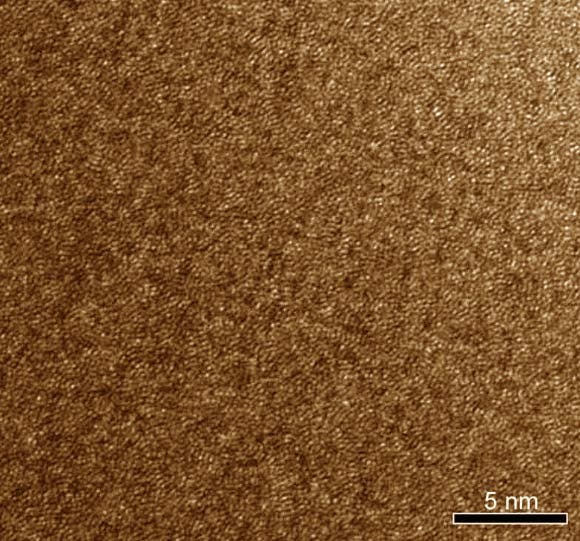A team of researchers has managed to create metallic glasses from pure, monoatomic metals. These metals are amorphous like glass, but they retain some of the properties of metals – like ultrafast cooling and solid state reaction.

Metallic glasses (also called glassy metals or amorphous metals) are solid metallic materials with a highly disordered arrangement of atoms. Amorphous metals are non-crystalline, and have a glass-like structure. But unlike common glasses, such as window glass, which are typically insulators, amorphous metals have good electrical conductivity. Glassy metals are highly regarded on the market, due to their special properties which include extremely rapid cooling, physical vapor deposition, solid-state reaction, ion irradiation, and mechanical alloying.
In this study, scientists developed metallic glasses using an innovative technique – a cooling nano-device under in-situ transmission electron microscope.
“Combining in situ transmission electron microscopy observation and atoms-to-continuum modelling, we investigated the formation condition and thermal stability of the monatomic metallic glasses as obtained. The availability of monatomic metallic glasses, being the simplest glass formers, offers unique possibilities for studying the structure and property relationships of glasses”, the study reads.
[Also Read: Modern ‘alchemy’ turns cement into semiconducting metal]
This technique was not only successful in developing the material, but achieved unprecedentedly high cooling rate that allowed for the transformation of liquefied elemental metals tantalum (Ta) and vanadium (V) into glass.
“This is a fundamental issue explored by people in this field for a long time, but nobody could solve the problem,” said Prof Mao, who is the senior author of a paper describing the new technique in the journal Nature.
This is not the first time someone has been able to get a pure metal into a glassy state though, but this is a new method, with remarkable properties. Traditionally, metallic glasses were formed by heating metal to extreme temperatures, then pouring the molten metal onto a very high speed rotor. The rotor then sprays metal droplets into liquid helium.
Journal Reference: Li Zhong, Jiangwei Wang, Hongwei Sheng, Ze Zhang & Scott X. Mao. Formation of monatomic metallic glasses through ultrafast liquid quenching. Nature 512,177–180doi:10.1038/nature13617
Was this helpful?



